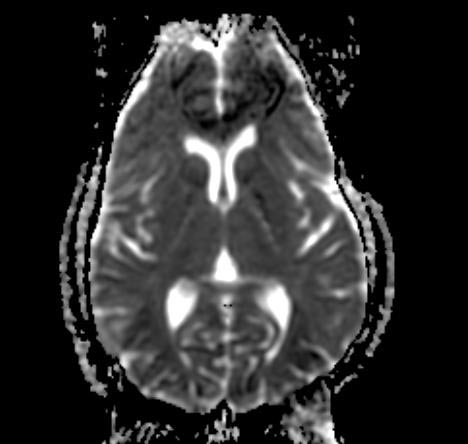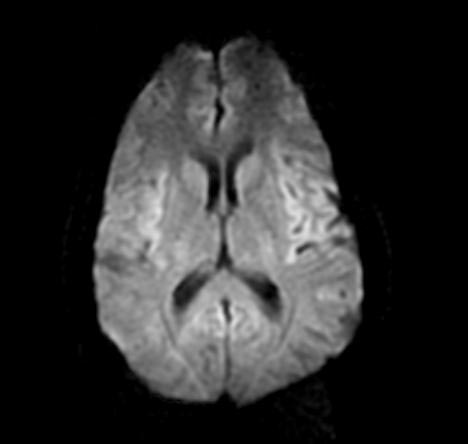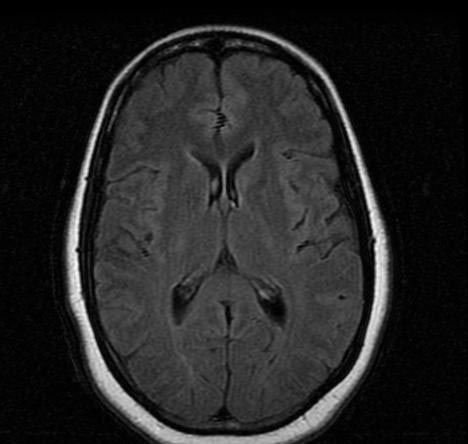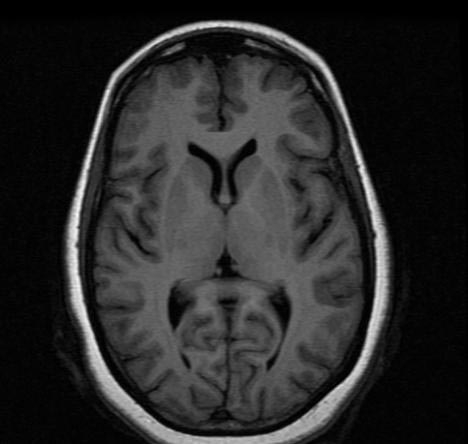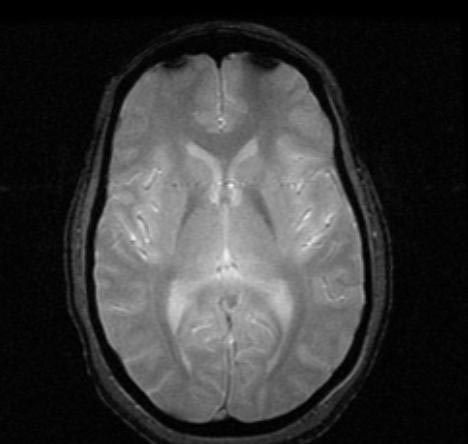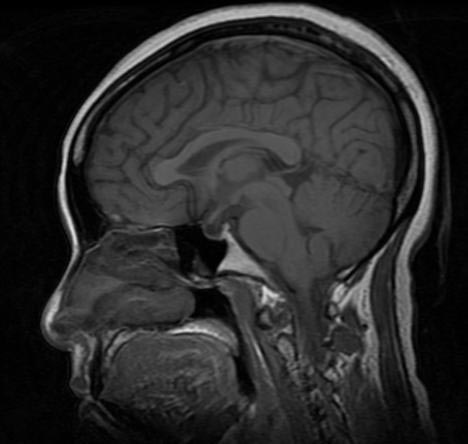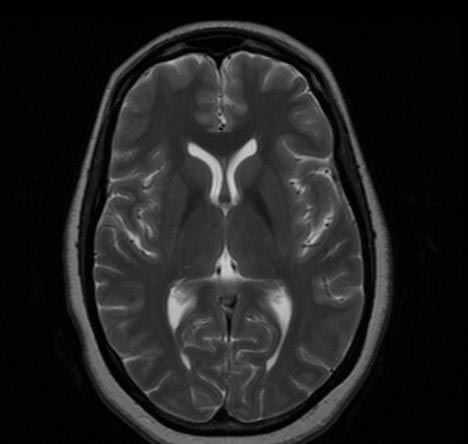Brain
Editor-In-Chief: C. Michael Gibson, M.S., M.D. [1]

|
WikiDoc Resources for Brain |
|
Articles |
|---|
|
Media |
|
Evidence Based Medicine |
|
Clinical Trials |
|
Ongoing Trials on Brain at Clinical Trials.gov Clinical Trials on Brain at Google
|
|
Guidelines / Policies / Govt |
|
US National Guidelines Clearinghouse on Brain
|
|
Books |
|
News |
|
Commentary |
|
Definitions |
|
Patient Resources / Community |
|
Directions to Hospitals Treating Brain Risk calculators and risk factors for Brain
|
|
Healthcare Provider Resources |
|
Continuing Medical Education (CME) |
|
International |
|
|
|
Business |
|
Experimental / Informatics |
In animals, the brain is the control center of the central nervous system, responsible for behavior. The brain is located in the head, protected by the skull and close to the primary sensory apparatus of vision, hearing, equilibrioception (balance), sense of taste, and olfaction (smell). While all vertebrates have a brain, most invertebrates have either a centralized brain or collections of individual ganglia. Some animals such as cnidarians and echinoderms do not have a centralized brain, instead have a decentralized nervous system, while animals such as sponges lack both a brain and nervous system entirely. Brains can be extremely complex. For example, the human brain contains roughly 23 billion neurons, each linked to as many as 10,000 other neurons.
Overview
The brain is the central information-processing organ of the body. It innervates the head through cranial nerves, and it communicates with the spinal cord, which innervates the body through spinal nerves. Nervous fibers transmitting signals from the brain are called efferent fibers. The fibers transmitting signals to the brain are called afferent fibers (or sensory fibers). Nerves can be afferent, efferent or mixed (i.e., containing both types of fibers).
The brain is the site of reason and intelligence, which include such components as cognition, perception, attention, memory and emotion. The brain is also responsible for control of posture and movements. It makes possible cognitive, motor and other forms of learning. The brain can perform a variety of functions automatically, without the need for conscious awareness, such as coordination of sensory systems (eg. sensory gating and multisensory integration), walking, and homeostatic body functions such as blood pressure, fluid balance, and body temperature.
The Cerebellum controls balance and movement. Without it, movements would not be coordinated.
Many functions are controlled by coordinated activity of the brain and spinal cord. Moreover, some behaviors such as simple reflexes and basic locomotion, can be executed under spinal cord control alone.
The brain undergoes transitions from wakefulness to sleep (and subtypes of these states). These state transitions are crucially important for proper brain functioning. (For example, it is believed that sleep is important for knowledge consolidation, as the neurons appear to organize the day's stimuli during deep sleep by randomly firing off the most recently used neuron pathways; additionally, without sleep, normal subjects are observed to develop symptoms resembling mental illness, even auditory hallucinations). Every brain state is associated with characteristic brain waves.
Neurons are electrically active brain cells that process information, whereas Glial cells perform supporting function. In addition to being electrically active, neurons constantly synthesize neurotransmitters. Neurons modify their properties (guided by gene expression) under the influence of their input signals. This plasticity underlies learning and adaptation. It is notable that some unused neuron pathways (constructions which have become physically isolated from other cells) may continue to exist long after the memory is absent from consciousness, possibly developing the subconscious.
The study of the brain is known as neuroscience, a field of biology aimed at understanding the functions of the brain at every level, from the molecular up to the psychological. There is also a branch of psychology that deals with the anatomy and physiology of the brain, known as biological psychology. This field of study focuses on each individual part of the brain and how it affects behavior.
History
Early views on the function of the brain regarded it as little more than cranial stuffing. In Ancient Egypt, from the late Middle Kingdom onwards, in preparation for mummification, the brain was regularly removed, for it was the heart that was assumed to be the seat of intelligence. According to Herodotus, during the first step of mummification, "The most perfect practice is to extract as much of the brain as possible with an iron hook, and what the hook cannot reach is mixed with drugs." Over the next five-thousand years, this view came to be reversed; the brain is now known to be seat of intelligence, although idiomatic variations of the former remain, as in memorizing something "by heart".[1]
The first thoughts on the field of psychology came from ancient philosophers, such as Aristotle. As thinkers became more in tune with biomedical research over time, as was the case with medieval psychologists such as Alhazen and Avicenna for example, the concepts of experimental psychology and clinical psychology began emerging. From that point, different branches of psychology emerged with different individuals creating new ideas, with modern psychologists such as Freud and Jung contributing to the field.
Mind and brain
The distinction between the mind and the brain is fundamental in philosophy of mind. The mind-body problem is one of the central problems in the history of philosophy. The brain is the physical and biological matter contained within the skull, responsible for electrochemical neuronal processes. The mind, in contrast, consists in mental attributes, such as beliefs, desires, perceptions, and so on. There are scientifically demonstrable correlations between mental events and neuronal events; the philosophical question is whether these phenomena are identical or are related in some other way.
The philosophical positions on the mind-body problem fall into two main categories. The first category is dualism, according to which the mind exists independently of the brain. Dualist theories are further divided into substance dualism and property dualism. Descartes is perhaps the most prominent substance dualist, while property dualism is more popular among contemporary dualists like David Chalmers. The second category is materialism, according to which mental phenomena are identical to neuronal phenomena. A third category of view, idealism, claims that only mental substances and phenomena exist. This view, most prominently held by 18th century English philosopher George Berkeley, has few contemporary adherents.
Both dualism and materialism face serious philosophical challenges. Dualism requires that we admit non-physical substances or properties into our ontology, a move that places dualism in apparent conflict with the scientific world view. Materialism, on the other hand, must provide an explanation of how two seemingly different kinds of phenomena - the mental and the physical - could be identical. This challenge can be seen by noting that mental phenomena have certain characteristics - particularly intentionality and phenomenal character - that physical phenomena do not, and seemingly could not, have.
Comparative anatomy

Three groups of animals have notably complex brains: the arthropods (insects, crustaceans, arachnids, and others), the cephalopods (octopuses, squids, and similar mollusks), and the craniates (vertebrates and hagfish).[2] The brain of arthropods and cephalopods arises from twin parallel nerve cords that extend through the body of the animal. Arthropods have a central brain with three divisions and large optical lobes behind each eye for visual processing.[2]
The brain of craniates develops from the anterior section of a single dorsal nerve cord, which later becomes the spinal cord.[3] In craniates, the brain is protected by the bones of the skull.
Mammals have a six-layered neocortex (or homotypic cortex, neopallium), in addition to having some parts of the brain that are allocortex.[3] In mammals, increasing convolutions of the brain are characteristic of animals with more advanced brains. These convolutions provide a larger surface area for a greater number of neurons while keeping the volume of the brain compact enough to fit inside the skull. The folding allows more grey matter to fit into a smaller volume, similar to a really long slinky being able to fit into a tiny box when completely pushed together. The folds are called gyri, while the spaces between the folds are called sulci.
In birds, the part of the brain that functionally corresponds to the neocortex is called nidopallium and derives from a different part of the brain. Some birds (like corvids and parrots) have intelligence equal to great apes, but even in these, the brain region that forms the mammalian neocortex is in fact almost entirely absent.
Although the general histology of the brain is similar from person to person, the structural anatomy can differ. Apart from the gross embryological divisions of the brain, the location of specific gyri and sulci, primary sensory regions, and other structures differs between species.
Mammals and other vertebrates
The telencephalon (cerebrum) is the largest region of the mammalian brain. This is the structure that is most easily visible in brain specimens, and is what most people associate with the "brain". In humans and several other animals, the fissures (sulci) and convolutions (gyri) give the brain a wrinkled appearance. In non-mammalian vertebrates with no cerebrum, the metencephalon is the highest center in the brain. Because humans walk upright, there is a flexure, or bend, in the brain between the brain stem and the cerebrum. Other vertebrates do not have this flexure. Generally, comparing the locations of certain brain structures between humans and other vertebrates often reveals a number of differences.
Behind (or in humans, below) the cerebrum is the cerebellum. The cerebellum is known to be involved in the control of movement,[3] and is connected by thick white matter fibers (cerebellar peduncles) to the pons.[4] The cerebrum has two cerebral hemispheres. The cerebellum also has hemispheres. The telencephalic hemispheres are connected by the corpus callosum, another large white matter tract. An outgrowth of the telencephalon called the olfactory bulb is a major structure in many animals, but in humans and other primates it is relatively small.
Vertebrate nervous systems are distinguished by bilaterally symmetrical encephalization. Encephalization refers to the tendency for more complex organisms to gain larger brains through evolutionary time. Larger vertebrates develop a complex, layered and interconnected neuronal circuitry. In modern species most closely related to the first vertebrates, brains are covered with gray matter that has a three-layer structure (allocortex). Their brains also contain deep brain nuclei and fiber tracts forming the white matter. Most regions of the human cerebral cortex have six layers of neurons (neocortex).[4]
Vertebrate brain regions
(See related article at List of regions in the human brain)
According to the hierarchy based on embryonic and evolutionary development, chordate brains are composed of the three regions that later develop into five total divisions:
- Rhombencephalon (hindbrain)
- Mesencephalon (midbrain)
- Prosencephalon (forebrain)
The brain can also be classified according to function, including divisions such as:
In recent years it was realized that certain birds have developed high intelligence entirely convergently from mammals such as humans. Hence, the functional areas of the avian brain have been redefined by the Avian Brain Nomenclature Consortium.
Humans

The structure of the human brain differs from that of other animals in several important ways. These differences allow for many abilities over and above those of other animals, such as advanced cognitive skills. Human encephalization is especially pronounced in the neocortex, the most complex part of the cerebral cortex. The proportion of the human brain that is devoted to the neocortex—especially to the prefrontal cortex—is larger than in all other mammals (indeed larger than in all animals, although only in mammals has the neocortex evolved to fulfill this kind of function).
Humans have unique neural capacities, but much of their brain structure is similar to that of other mammals. Basic systems that alert the nervous system to stimulus, that sense events in the environment, and monitor the condition of the body are similar to those of even non-mammalian vertebrates. The neural circuitry underlying human consciousness includes both the advanced neocortex and prototypical structures of the brainstem. The human brain also has a massive number of synaptic connections allowing for a great deal of parallel processing.
Neurobiology
The brain is composed of two broad classes of cells, neurons and glia, both of which contain several different cell types which perform different functions. Interconnected neurons form neural networks (or neural ensembles). These networks are similar to man-made electrical circuits in that they contain circuit elements (neurons) connected by biological wires (nerve fibers). These do not form simple one-to-one electrical circuits like many man-made circuits, however. Typically neurons connect to at least a thousand other neurons.[5] These highly specialized circuits make up systems which are the basis of perception, different types of action, and higher cognitive function.
Structure
Template:Neuron map Neurons are the cells that generate action potentials and convey information to other cells; these constitute the essential class of brain cells.
In addition to neurons, the brain contains glial cells in a roughly 10:1 proportion to neurons. Glial cells ("glia" is Greek for “glue”) form a support system for neurons. They create the insulating myelin, provide structure to the neuronal network, manage waste, and clean up neurotransmitters. Most types of glia in the brain are present in the entire nervous system. Exceptions include the oligodendrocytes which myelinate neural axons (a role performed by Schwann cells in the peripheral nervous system). The myelin in the oligodendrocytes insulates the axons of some neurons. White matter in the brain is myelinated neurons, while grey matter contains mostly cell soma, dendrites, and unmyelinated portions of axons and glia. The space between neurons is filled with dendrites as well as unmyelinated segments of axons; this area is referred to as the neuropil.
In mammals, the brain is surrounded by connective tissues called the meninges, a system of membranes that separate the skull from the brain. This three-layered covering is composed of (from the outside in) the dura mater, arachnoid mater, and pia mater. The arachnoid and pia are physically connected and thus often considered as a single layer, the pia-arachnoid. Below the arachnoid is the subarachnoid space which contains cerebrospinal fluid, a substance that protects the nervous system. Blood vessels enter the central nervous system through the perivascular space above the pia mater. The cells in the blood vessel walls are joined tightly, forming the blood-brain barrier which protects the brain from toxins that might enter through the blood.
The brain is bathed in cerebrospinal fluid (CSF), which circulates between layers of the meninges and through cavities in the brain called ventricles. It is important both chemically for metabolism and mechanically for shock-prevention. For example, the human brain weighs about 1-1.5 kg or about 2-3 lb. The mass and density of the brain are such that it will begin to collapse under its own weight if unsupported by the CSF. The CSF allows the brain to float, easing the physical stress caused by the brain’s mass.
Function
Vertebrate brains receive signals through nerves arriving from the sensors of the organism. These signals are then processed throughout the central nervous system; reactions are formulated based upon reflex and learned experiences. A similarly extensive nerve network delivers signals from a brain to control important muscles throughout the body. Anatomically, the majority of afferent and efferent nerves (with the exception of the cranial nerves) are connected to the spinal cord, which then transfers the signals to and from the brain.
Sensory input is processed by the brain to recognize danger, find food, identify potential mates, and perform more sophisticated functions. Visual, touch, and auditory sensory pathways of vertebrates are routed to specific nuclei of the thalamus and then to regions of the cerebral cortex that are specific to each sensory system. The visual system, the auditory system, and the somatosensory system. Olfactory pathways are routed to the olfactory bulb, then to various parts of the olfactory system. Taste is routed through the brainstem and then to other portions of the gustatory system.
To control movement the brain has several parallel systems of muscle control. The motor system controls voluntary muscle movement, aided by the motor cortex, cerebellum, and the basal ganglia. The system eventually projects to the spinal cord and then out to the muscle effectors. Nuclei in the brain stem control many involuntary muscle functions such as heart rate and breathing. In addition, many automatic acts (simple reflexes, locomotion) can be controlled by the spinal cord alone.
Brains also produce a portion of the body's hormones that can influence organs and glands elsewhere in a body—conversely, brains also react to hormones produced elsewhere in the body. In mammals, the hormones that regulate hormone production throughout the body are produced in the brain by the structure called the pituitary gland.
Evidence strongly suggests that developed brains derive consciousness from the complex interactions between the numerous systems within the brain. Cognitive processing in mammals occurs in the cerebral cortex but relies on midbrain and limbic functions as well. Among "younger" (in an evolutionary sense) vertebrates, advanced processing involves progressively rostral (forward) regions of the brain.
Hormones, incoming sensory information, and cognitive processing performed by the brain determine the brain state. Stimulus from any source can trigger a general arousal process that focuses cortical operations to processing of the new information. This focusing of cognition is known as attention. Cognitive priorities are constantly shifted by a variety of factors such as hunger, fatigue, belief, unfamiliar information, or threat. The simplest dichotomy related to the processing of threats is the fight-or-flight response mediated by the amygdala and other limbic structures.
Neurotransmitter systems
Neurons expressing certain types of neurotransmitters sometimes form distinct systems, where activation of the system causes effects in large volumes of the brain, called volume transmission.
The major neurotransmitter systems are the noradrenaline (norepinephrine) system, the dopamine system, the serotonin system and the cholinergic system.
Drugs targeting the neurotransmitter of such systems affects the whole system, and explains the mode of action of many drugs;
- Cocaine, for example, blocks the reuptake of dopamine, leaving these neurotransmitters in the synaptic gap longer.
- Prozac is a selective serotonin reuptake inhibitor (SSRI), hence potentiating the effect of naturally released serotonin.
- AMPT prevents the conversion of tyrosine to L-DOPA, the precursor to dopamine; reserpine prevents dopamine storage within vesicles; and deprenyl inhibits monoamine oxidase (MAO)-B and thus increases dopamine levels.
Diseases may affect specific neurotransmitter systems. For example, Parkinson's disease is at least in part related to failure of dopaminergic cells in deep-brain nuclei, for example the substantia nigra. Treatments potentiating the effect of dopamine precursors have been proposed and effected, with moderate success.
A brief comparison of the major neurotransmitter systems follows:
| System | Origin [6] | Effects[6] |
|---|---|---|
| Noradrenaline system | locus coeruleus |
|
| Lateral tegmental field | ||
| Dopamine system | dopamine pathways: | motor system, reward, cognition, endocrine, nausea |
| Serotonin system | caudal dorsal raphe nucleus | Increase (introverson), mood, satiety, body temperature and sleep, while decreasing nociception. |
| rostral dorsal raphe nucleus | ||
| Cholinergic system | pontomesencephalotegmental complex |
|
| basal optic nucleus of Meynert | ||
| medial septal nucleus |
Pathology
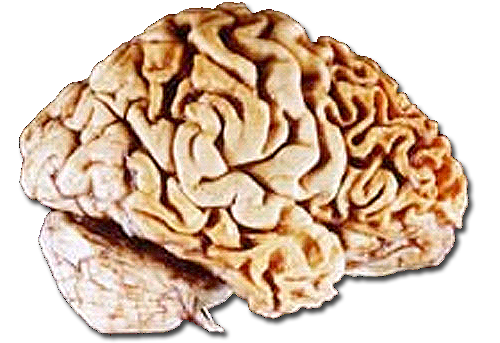
Clinically, death is defined as an absence of brain activity as measured by EEG. Injuries to the brain tend to affect large areas of the organ, sometimes causing major deficits in intelligence, memory, and movement. Head trauma caused, for example, by vehicle and industrial accidents, is a leading cause of death in youth and middle age. In many cases, more damage is caused by resultant edema than by the impact itself. Stroke, caused by the blockage or rupturing of blood vessels in the brain, is another major cause of death from brain damage.
Other problems in the brain can be more accurately classified as diseases rather than injuries. Neurodegenerative diseases, such as Alzheimer's disease, Parkinson's disease, motor neurone disease, and Huntington's disease are caused by the gradual death of individual neurons, leading to decrements in movement control, memory, and cognition. Currently only the symptoms of these diseases can be treated. Mental illnesses, such as clinical depression, schizophrenia, bipolar disorder, and post-traumatic stress disorder are brain diseases that impact personality and, typically, other aspects of mental and somatic function. These disorders may be treated by psychiatric therapy, pharmaceutical intervention, or through a combination of treatments; therapeutic effectiveness varies significantly among individuals.
Some infectious diseases affecting the brain are caused by viruses and bacteria. Infection of the meninges, the membrane that covers the brain, can lead to meningitis. Bovine spongiform encephalopathy (also known as mad cow disease), is deadly in cattle and humans and is linked to prions. Kuru is a similar prion-borne degenerative brain disease affecting humans. Both are linked to the ingestion of neural tissue, and may explain the tendency in some species to avoid cannibalism. Viral or bacterial causes have been reported in multiple sclerosis, Parkinson's disease, and are established causes of encephalopathy, and encephalomyelitis.
Many brain disorders are congenital. Tay-Sachs disease, Fragile X syndrome, and Down syndrome are all linked to genetic and chromosomal errors. Malfunctions in the embryonic development of the brain can be caused by genetic factors, drug use, nutritional deficiencies, and disease during a mother's pregnancy.
Certain brain disorders are treated by brain neurosurgeons while others are treated by neurologists and psychiatrists.
Study of the brain
Fields of study
Neuroscience seeks to understand the nervous system, including the brain, from a biological and computational perspective. Psychology seeks to understand behavior and the brain. Neurology refers to the medical applications of neuroscience. The brain is also one of the most important organs studied in psychiatry, the branch of medicine which exists to study, prevent, and treat mental disorders.[7][8][9] Cognitive science seeks to unify neuroscience and psychology with other fields that concern themselves with the brain, such as computer science (artificial intelligence and similar fields) and philosophy.
Methods of observation
Each method for observing activity in the brain has its advantages and drawbacks.
Electrophysiology
Electrophysiology allows scientists to record the electrical activity of individual neurons or groups of neurons.
EEG
By placing electrodes on the scalp one can record the summed electrical activity of the cortex in a technique known as electroencephalography (EEG). EEG measures the mass changes in electrical current from the cerebral cortex, but can only detect changes over large areas of the brain with very little sub-cortical activity.
MEG
Apart from measuring the electric field around the skull it is possible to measure the magnetic field directly in a technique known as magnetoencephalography (MEG). This technique has the same temporal resolution as EEG but much better spatial resolution, although admittedly not as good as fMRI. The main advantage over fMRI is a direct relationship between neural activation and measurement.
fMRI and PET

Functional magnetic resonance imaging (fMRI) measures changes in blood flow in the brain, but the activity of neurons is not directly measured, nor can it be distinguished whether this activity is inhibitory or excitatory. fMRI is a noninvasive, indirect method for measuring neural activity that is based on BOLD; Blood Oxygen Level Dependent changes. The changes in blood flow that occur in capillary beds in specific regions of the brain are thought to represent various neuronal activities (metabolism of synaptic reuptake). Similarly, a positron emission tomography (PET), is able to monitor glucose and oxygen metabolism as well as neurotransmitter activity in different areas within the brain which can be correlated to the level of activity in that region.
Behavioral
Behavioral tests can measure symptoms of disease and mental performance, but can only provide indirect measurements of brain function and may not be practical in all animals. In humans however, a neurological exam can be done to determine the location of any trauma, lesion, or tumor within the brain, brain stem, or spinal cord.
Anatomical
Autopsy analysis of the brain allows for the study of anatomy and protein expression patterns, but is only possible after the human or animal is dead. Magnetic resonance imaging (MRI) can be used to study the anatomy of a living creature and is widely used in both research and medicine.
Other studies
Computer scientists have produced simulated "artificial neural networks" loosely based on the structure of neuron connections in the brain. Some artificial intelligence research seeks to replicate brain function—although not necessarily brain mechanisms—but as yet has been met with limited success.
Creating algorithms to mimic a biological brain is very difficult because the brain is not a static arrangement of circuits, but a network of vastly interconnected neurons that are constantly changing their connectivity and sensitivity. More recent work in both neuroscience and artificial intelligence models the brain using the mathematical tools of chaos theory and dynamical systems. Current research has also focused on recreating the neural structure of the brain with the aim of producing human-like cognition and artificial intelligence.
As nourishment
Like most other internal organs, the brain can serve as nourishment. For example, in the Southern United States canned pork brain in gravy can be purchased for consumption as food. This form of brain is often fried with scrambled eggs to produce the famous "Eggs n' Brains".[10] The brain of animals also features in French cuisine such as in the dish tête de veau, or head of calf. Although it might consist only of the outer meat of the skull and jaw, the full meal includes the brain, tongue, and glands. Similar delicacies from around the world include Mexican tacos de sesos made with cattle brain as well as squirrel brain in the US South.[11] The Anyang tribe of Cameroon practiced a tradition in which a new tribal chief would consume the brain of a hunted gorilla while another senior member of the tribe would eat the heart.[12] Indonesian cuisine specialty in Minangkabau cuisine also served beef brain in a gravy coconut milk named gulai otak (beef brain curry). Roasted or fried goat brain is eaten in south India and some parts of north India.
Consuming the brain and other nerve tissue of animals is not without risks. The first problem is that the makeup of the brain is 60% fat due to the myelin (which itself is 70% fat) insulating the axons of neurons and glia.[13] As an example, a 140 g can of "pork brains in milk gravy", a single serving, contains 3500 milligrams of cholesterol, 1170% of our recommended daily intake.[14]
Brain consumption can result in contracting fatal transmissible spongiform encephalopathies such as Variant Creutzfeldt-Jakob disease and other prion diseases in humans and mad cow disease in cattle.[15] Another prion disease called kuru has been traced to a funerary ritual among the Fore people of Papua New Guinea in which those close to the dead would eat the brain of the deceased to create a sense of immortality.[16] Some archaeological evidence suggests that the mourning rituals of European Neanderthals also involved the consumption of the brain.[17] Because of the risk of being infected by prions one should always wear gloves when handling brains.
It is also well known in the hunting community that the brain of wild animals should not be consumed, due to the risk of chronic wasting disease. The brain is still useful to hunters, in that most animals have enough brain matter for use in the tanning of their own hides.
Brain energy consumption

The neurons of the brain require a lot of energy. Although the brain represents only 2% of the body weight, it receives 15% of the cardiac output, 20% of total body oxygen consumption, and 25% of total body glucose utilization. The energy consumption for the brain to simply survive is 0.1 calories per minute, while this value can be as high as 1.5 calories per minute during crossword puzzle-solving.[18] The demands of the brain limit its size in many species. Molossid bats and the Vespertilionid Nyctalus spp. have brains that have been reduced from the ancestral form to invest in wing-size for the sake of manoeuverability. This contrasts with fruit bats, which require more advanced neural structures and do not pursue their prey.[19]
Image Gallery
MRI
-
Normal brain
-
Normal brain
-
Normal brain
-
Normal brain
-
Normal brain
-
Normal brain
-
Normal brain
Further reading
- Junqueira, L.C., and J. Carneiro (2003). Basic Histology: Text and Atlas, Tenth Edition. Lange Medical Books McGraw-Hill. ISBN 0-07-121565-4.
- Kinseher Richard, Geborgen in Liebe und Licht - Gemeinsame Ursache von Intuition, Déjà-vu-, Schutzengel-, und Nahtod-Erlebnissen, BoD, 2006, ISBN 3-8334-51963, German language: (A new theory: A LIVE-scan of the episodic memory, can be observed during near-death-experiences. The stored experiences are then judged by the topical intellect.)
- Sala, Sergio Della, editor. (1999). Mind myths: Exploring popular assumptions about the mind and brain. J. Wiley & Sons, New York. ISBN 0-471-98303-9.
- Vander, A., J. Sherman, D. Luciano (2001). Human Physiology: The Mechanisms of Body Function. McGraw Hill Higher Education. ISBN 0-07-118088-5.
- Scaruffi, Piero. The Nature of Consciousness. Omniware. ISBN 0-9765531-1-2.
References
- ↑ Hendrickson, Robert (2000). The Facts on File Encyclopedia of Word and Phrase Origins. New York: Facts on File. ISBN 978-0816040889.
The ancient Greeks believed that the heart, the most noticeable internal organ, was the seat of intelligence and memory as well as emotion. This belief was passed on down the ages and became the basis for the English expression 'learn by heart,' which is used by Chaucer (1374) and must have been proverbial long before that. 'To record' reminds us again of this ancient belief in the heart as the seat of the mind. When writing wasn't a simple act, things had to be memorized; thus we have the word 'record,' formed from the Latin 're,' 'again,' and 'cor,' 'heart,' which means exactly the same as 'learn by heart.'
Unknown parameter|month=ignored (help) - ↑ 2.0 2.1 Butler, Ann B. (2000). "Chordate Evolution and the Origin of Craniates: An Old Brain in a New Head". The Anatomical Record. 261: 111–125.
- ↑ 3.0 3.1 3.2 Kandel, ER (2000). Principles of Neural Science (4th ed. ed.). New York: McGraw-Hill. ISBN 0-8385-7701-6. Unknown parameter
|coauthors=ignored (help) - ↑ 4.0 4.1 Martin, John H. (1996). Neuroanatomy: Text and Atlas (Second Edition ed.). New York: McGraw-Hill. ISBN 0-07-138183-X.
- ↑ Junqueira, L.C. Basic Histology: Text and Atlas (10th ed. ed.). Unknown parameter
|coauthors=ignored (help) (Statistic from page 161) - ↑ 6.0 6.1 Rang, H. P. (2003). Pharmacology. Edinburgh: Churchill Livingstone. pp. page 474 for noradrenaline system, page 476 for dopamine system, page 480 for serotonin system and page 483 for cholinergic system. ISBN 0-443-07145-4.
- ↑ Storrow, H.A. (1969). Outline of Clinical Psychiatry. New York: Appleton-Century-Crofts, p. 1. ISBN 978-0-39-085075-1
- ↑ Lyness, J.M. (1997). Psychiatric Pearls. Philadelphia: F.A. Davis Company, p. 3. ISBN 978-0-80-360280-9
- ↑ Guze, S.B. (1992). Why Psychiatry Is a Branch of Medicine. New York: Oxford University Press, p. 4. ISBN 978-0-19-507420-8
- ↑ Lukas, Paul. "Inconspicuous Consumption: Mulling Brains". New York magazine. Unknown parameter
|accessdaymonth=ignored (help); Unknown parameter|accessyear=ignored (|access-date=suggested) (help) - ↑ "Weird Foods: Mammal". Weird-Food.com. Unknown parameter
|accessdaymonth=ignored (help); Unknown parameter|accessyear=ignored (|access-date=suggested) (help) - ↑ Meder, Angela. "Gorillas in African Culture and Medicine". Gorilla Journal. Unknown parameter
|accessdaymonth=ignored (help); Unknown parameter|accessyear=ignored (|access-date=suggested) (help) - ↑ Dorfman, Kelly. "Nutritional Summary: Notes Taken From a Recent Autism Society Meeting". Diet and Autism. Unknown parameter
|accessdaymonth=ignored (help); Unknown parameter|accessyear=ignored (|access-date=suggested) (help) - ↑ "Pork Brains in Milk Gravy". Unknown parameter
|accessyear=ignored (|access-date=suggested) (help); Unknown parameter|accessdaymonth=ignored (help) - ↑ Collinge, John (2001). "Prion diseases of humans and animals: their causes and molecular basis". Annual Review of Neuroscience. 24: 519–50. PMID 11283320.
- ↑ Collins, S (2001). "Gerstmann-Straussler-Scheinker syndrome,fatal familial insomnia, and kuru: a review of these less common human transmissible spongiform encephalopathies". Journal of Clinical Neuroscience. 8 (5). PMID 11535002. Unknown parameter
|ages=ignored (help); Unknown parameter|coauthors=ignored (help) - ↑ Connell, Evan S. (2001). The Aztec Treasure House. Counterpoint Press. ISBN 1-58243-162-0.
- ↑ Calderone, Melissa A. (2006). "Mental Workout: Do you use more energy when you're thinking really hard?". Retrieved 2007-06-03. Unknown parameter
|month=ignored (help) - ↑ Safi, K., M.A. Seid & D.K.N. Dechmann. (2005) "Bigger is not always better: when brains get smaller." Biol. Lett. 1(3): 283-6.
- Doidge, Norman (2007-03-15). The Brain That Changes Itself: Stories of Personal Triumph from the Frontiers of Brain Science. Viking Adult. ISBN 978-0670038305.
External links
- How Your Brain Works at HowStuffWorks
- Brain Tutorial
- Comparative Mammalian Brain Collection
- Brain Research News from ScienceDaily
- BrainInfo for Neuroanatomy
- Neuroscience for kids
- Everything you wanted to know about the brain — Provided by New Scientist.
- Fact sheets on brain injury - causes, effects and coping strategies
- Neuroscience wiki.
- BrainMaps.org, interactive high-resolution digital brain atlas based on scanned images of serial sections of both primate and non-primate brains
- Scientific American Magazine (September 2003 Issue) Ultimate Self-Improvement
- Brain Research and Information Network B.R.A.I.N.
Template:Nervous system
Template:Telencephalon
Template:Diencephalon
Template:Mesencephalon
Template:Rhombencephalon
Template:Link FA af:Brein ar:دماغ az:Beyin bm:Kunkolosɛmɛ bn:মস্তিষ্ক bs:Mozak bg:Главен мозък ca:Cervell cs:Mozek cy:Ymennydd da:Hjerne de:Gehirn et:Peaaju eo:Cerbo eu:Garun fa:مغز gl:Cerebro zh-classical:腦 ko:뇌 hr:Ljudski mozak io:Cerebro id:Otak ia:Cerebro is:Heili it:Cervello he:מוח kk:Ми lt:Galvos smegenys hu:Agy mk:Черепен мозок nah:Cuāyōllōtl nl:Hersenen no:Hjernen ug:مېڭە ps:ماغزه qu:Ñutqu sq:Truri scn:Ciriveddu simple:Brain sk:Mozog sl:Možgani sr:Мозак fi:Aivot sv:Hjärna tl:Utak ta:மனித மூளை th:สมอง uk:Головний мозок yi:מוח
